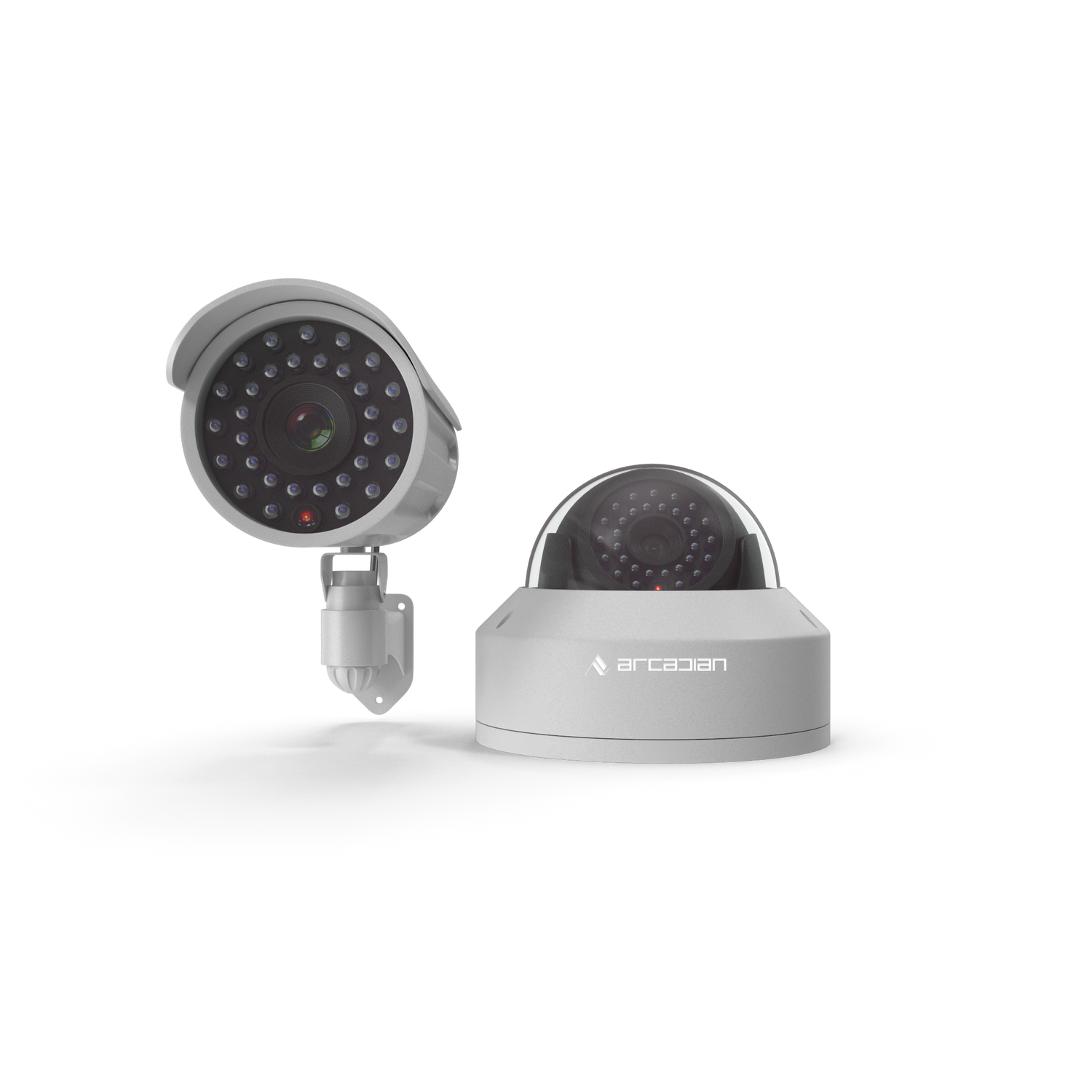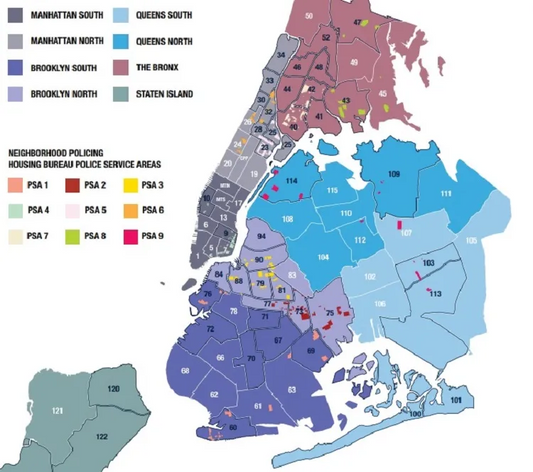The Hybrid Guard Model: How Monitoring Companies Multiply Coverage Without Hiring
Most monitoring centers think they need more guards to scale. In reality, they need smarter ones. Here’s how the hybrid guard model transforms cost centers into scalable, AI-driven profit engines.

- Introduction
- Quick Summary / Key Takeaways
- Background & Relevance: The Labor Crisis in Security Monitoring
- What Is the Hybrid Guard Model?
- Why Traditional Monitoring Centers Are Breaking
- How AI-as-a-Guard Augments Human Operators
- A Real-World Example (Anonymized)
- Why AI Works Better Than Adding Staff
- Mobile CCTV and the Hybrid Revolution
- Competitive Comparison: ArcadianAI vs. Industry Players
- How ArcadianAI + Ranger Fit Into Existing Operations
- ROI Breakdown: Multiply Coverage Without Hiring
- Common Questions (FAQ)
- Conclusion & CTA
- Security Glossary (2025 Edition)
Introduction
Every monitoring company faces the same invisible ceiling.
You grow your client base, add more sites, buy more cameras — and somehow, you still can’t keep up.
False alarms flood your operators. Dispatchers are stretched thin. Margins shrink while labor costs rise.
So what do most companies do?
They hire more guards. They build more stations. They buy more NVRs.
And they hope this time, scale won’t collapse under its own weight.
But here’s the uncomfortable truth:
Hiring more guards won’t fix broken visibility.
It just multiplies inefficiency.
The real breakthrough comes from the hybrid guard model — where AI works as a virtual colleague, monitoring every camera, verifying every event, and surfacing only what’s real.
This post explores how monitoring companies (and even mobile CCTV operators) are scaling coverage without hiring, using ArcadianAI’s camera-agnostic AI-as-a-Guard platform — and why this approach outperforms traditional VMS, VSaaS, and static analytics offered by competitors like Verkada, Genetec, or Eagle Eye Networks.
Quick Summary / Key Takeaways
-
Hiring more guards ≠ more security — it often means more noise.
-
AI-as-a-Guard filters false alarms and frees operators for what matters.
-
The hybrid model blends human judgment with AI vigilance for 24/7 coverage.
-
Camera-agnostic AI extends the life and value of existing systems.
-
Monitoring centers adopting the hybrid model report up to 60% fewer false alarms and 3× coverage per operator.
Background & Relevance: The Labor Crisis in Security Monitoring
The security industry is at a breaking point:
-
60–70% of all video alarms received by monitoring centers are false or low-priority (Source: CHeKT, 2024).
-
Guard wages in North America have risen 18–22% since 2020 (Bureau of Labor Statistics, 2025).
-
The average operator can only handle 6–8 concurrent video feeds effectively (Security Industry Association, 2024).
For video monitoring firms and mobile trailer operators, this creates a perfect storm:
-
More contracts → more alarms → more fatigue → more churn.
-
Customers expect instant verification — but humans can’t multitask infinitely.
-
Hiring and training costs spiral while monthly recurring revenue (MRR) stagnates.
The result?
Static scaling — a trap where every new customer erodes profit margins.
What Is the Hybrid Guard Model?
The Hybrid Guard Model is not automation. It’s augmentation.
It’s the fusion of AI precision and human intuition — where algorithms handle the monotony, and humans handle the judgment.
In this model:
-
AI observes every camera 24/7, detecting anomalies, patterns, and context.
-
Humans verify only filtered, high-confidence events that truly matter.
-
Dispatches become smarter, faster, and fewer.
Instead of expanding headcount, you expand attention bandwidth.
Your operators shift from reacting to everything, to confirming only the right things.
Reverse psychology time:
Most monitoring centers think they’ll lose control if they hand off tasks to AI.
In reality, they finally gain control — because they stop drowning in false positives.
Why Traditional Monitoring Centers Are Breaking
Traditional command centers run on a 1990s operating model:
a maze of screens, beeping NVRs, and overworked guards juggling dozens of live feeds.
Let’s be blunt:
-
90% of those screens show nothing happening.
-
Operators spend 70% of their time verifying false alerts.
-
System integrations are patchy; each site behaves differently.
Every false alarm wastes:
-
2–3 minutes of operator time
-
1–2 minutes of dispatcher coordination
-
~$4–$7 in soft costs (labor + bandwidth + attention loss)
Multiply that by hundreds of alarms per day, and you’re burning thousands per month — not in hardware, but in human bandwidth.
That’s why the hybrid guard model is revolutionary.
It doesn’t replace staff — it redeems them.
How AI-as-a-Guard Augments Human Operators
ArcadianAI’s Ranger system acts as a virtual security colleague.
Think of it as your operator’s AI wingman.
It sees what they can’t. It never blinks. And it never forgets patterns.
Here’s how the collaboration works:
-
Observer Layer (Vision):
Ranger watches all camera feeds — fixed or mobile — detecting anomalies, movements, and context shifts. It understands night/day cycles, weather, reflections, and human behavior patterns. -
Alerter Layer (Intelligence):
It filters only verified anomalies — cross-referencing prior frames, time of day, and multi-camera correlation to suppress false alarms (like lights flicker, bugs, or motion shadows). -
Case Manager (Action):
Operators see a clean, timestamped event summary with clips ready for verification or escalation.
The result:
-
Operators review only 5–10% of the footage they used to.
-
False alarms drop 50–65%.
-
Dispatch quality improves — each verified alert has full context.
In other words:
AI doesn’t steal the operator’s job — it gives them a better one.
A Real-World Example (Anonymized)
A large North American monitoring provider — operating a mix of central station and mobile CCTV trailers — faced a simple math problem:
More clients = more alarms = more chaos.
Their operators were overwhelmed, their false alarm rate hovered above 70%, and their customers started questioning ROI.
They deployed ArcadianAI’s hybrid guard model across 200+ cameras at multiple sites.
Within 30 days:
-
Verified alarms increased by 210% (AI filtered noise).
-
False alarms dropped by 61%.
-
Operator efficiency rose 3.2× — same team, triple coverage.
-
Monthly service margins improved by 37%.
Instead of hiring 5 new guards, they expanded client capacity — with no added labor.
Why AI Works Better Than Adding Staff
Reverse logic again:
Adding more people doesn’t make a system smarter — it makes it louder.
AI brings consistency where human attention falters:
-
No fatigue: AI never misses a movement at 3:00 AM.
-
No bias: it judges behavior, not faces.
-
No downtime: 24/7 analysis across hundreds of streams.
It also creates a feedback loop — every confirmed event retrains the detection model, improving accuracy for similar scenarios (loitering, perimeter breaches, vehicle movement, etc.).
While others add guards to watch more noise, ArcadianAI customers add intelligence to watch less noise.
Mobile CCTV and the Hybrid Revolution
Mobile surveillance trailers are the fastest-growing segment in remote monitoring — but they’re also the most alarm-heavy.
Wind. Shadows. IR reflections. Bugs.
All look like “motion” to static analytics.
That’s why AI-as-a-Guard is so critical here.
It interprets context — not just pixels.
When a trailer detects movement:
-
Ranger first checks for pattern and persistence.
-
Then cross-verifies across multiple cameras (if available).
-
Then filters based on schedule, weather, and site metadata.
Operators see only what’s real.
Clients see fewer false dispatches and faster verification.
Every trailer becomes a smart, autonomous sentry — not just a motion detector on wheels.
Competitive Comparison: ArcadianAI vs. Industry Players
| Feature / Platform | ArcadianAI (Ranger) | Verkada | Genetec | Eagle Eye Networks |
|---|---|---|---|---|
| Hardware Model | Camera-agnostic (any ONVIF/RTSP) | Proprietary cameras only | Mixed (proprietary + partner) | Cloud-linked proprietary |
| AI Capability | Real-time “AI-as-a-Guard” (context-aware, adaptive) | Static analytics | Limited motion metadata | Basic motion/event tagging |
| False Alarm Reduction | 50–65% | Minimal | Dependent on rules | Basic filters |
| Integration | Works with existing NVRs/VMS, mobile CCTV, POS | Closed ecosystem | Complex enterprise setups | Subscription VSaaS only |
| Deployment Speed | Remote, instant via cloud | Hardware replacement required | IT-heavy | Cloud onboarding only |
| ROI Payback | <90 days | 12–18 months | 6–12 months | 6–12 months |
| Use Cases | Fixed + mobile + hybrid guard | Corporate VSaaS | Enterprise security | SMB remote access |
ArcadianAI doesn’t compete on camera sales — it competes on outcomes.
How ArcadianAI + Ranger Fit Into Existing Operations
Unlike closed-loop systems, ArcadianAI integrates seamlessly with:
-
Existing NVRs and VMS (no rip-and-replace).
-
Central monitoring software (Immix, SureView, Calipsa, etc.).
-
Mobile units with LTE or satellite uplinks.
Operators keep their workflows — they just get smarter alerts.
The AI runs in parallel:
-
Observes
-
Scores
-
Correlates
-
Escalates (only verified anomalies)
Your monitoring platform becomes a living system — one that learns, adapts, and scales without adding headcount.
ROI Breakdown: Multiply Coverage Without Hiring
Let’s visualize it:
| Metric | Before Hybrid Model | After ArcadianAI | Impact |
|---|---|---|---|
| Operator Coverage | 8 cameras/operator | 24 cameras/operator | 3× increase |
| False Alarms | 72% | 28% | −61% reduction |
| Verified Dispatch Accuracy | 65% | 94% | ↑44% accuracy |
| Monthly Labor Cost | $35,000 | $35,000 | Unchanged |
| Sites Monitored | 100 | 300 | +200% scalability |
| ROI Period | — | 3 months | <90 days payback |
Every CFO’s favorite number is one that starts saving immediately.
ArcadianAI makes “scale without hiring” not a slogan — a spreadsheet reality.
Common Questions (FAQ)
Q1. Does AI replace human guards?
No — it replaces inefficiency. AI filters noise so guards and operators focus on verified events.
Q2. Can this work with my existing cameras and NVR?
Yes. ArcadianAI is camera-agnostic and integrates via RTSP/ONVIF — no rip-and-replace.
Q3. How fast is deployment?
Most monitoring centers are live in days. Mobile trailers connect instantly via the ArcadianAI Bridge or cloud link.
Q4. What about false positives from shadows or insects?
Ranger’s adaptive model understands environmental patterns and filters visual noise dynamically.
Q5. Is data secure and NDAA-compliant?
Yes. ArcadianAI adheres to NDAA, GDPR, and SOC2 frameworks, ensuring all video data remains encrypted and compliant.
Q6. Can it integrate with my dispatch or ticketing tools?
Absolutely. ArcadianAI connects via API or webhook to major monitoring and case-management systems.
Conclusion & CTA
Scaling used to mean hiring.
Now it means thinking differently.
The hybrid guard model isn’t about replacing people — it’s about restoring their value by letting AI handle what machines do best: precision, patience, and pattern recognition.
While others chase headcount, the smartest monitoring companies are chasing intelligence.
They’re discovering that AI doesn’t cost jobs — it compounds ROI.
So before you post your next hiring ad, ask this:
Would you rather hire five more guards — or give the ones you have five times the power?
Security Glossary (2025 Edition)
AI-as-a-Guard: AI system that monitors video feeds like a human guard, detecting and verifying real events.
ARC (Alarm Receiving Center): A central facility that monitors alarm systems and dispatches responses.
False Alarm Reduction: Process of minimizing invalid alerts through AI verification.
Hybrid Guard Model: Integration of AI and human monitoring to increase efficiency and scalability.
Mobile CCTV: Portable surveillance trailers or towers used for temporary or remote monitoring.
Multi-Camera Correlation: AI capability to cross-verify events across different camera angles.
NDAA Compliance: U.S. regulation restricting the use of non-approved security hardware/software.
NVR (Network Video Recorder): Device that records IP camera video streams.
POS-Aware Analytics: Integration of video data with point-of-sale systems for event correlation.
ROI (Return on Investment): Financial performance measure comparing gain to cost.
Ranger: ArcadianAI’s core AI-as-a-Guard system.
RTSP / ONVIF: Standard streaming protocols enabling camera interoperability.
Tailgating Detection: Identifying unauthorized entry following an authorized person.
VMS (Video Management System): Software platform managing multiple camera feeds.
VSaaS (Video Surveillance as a Service): Cloud-based video monitoring model.
Dispatch Automation: Using AI to trigger or verify alarms before human response.
Context-Aware Analytics: AI interpreting environmental and behavioral patterns, not just motion.
AI Overviews Optimization: Structuring content for Google’s AI summaries via clear Q&A and factual tone.
Cloud-Native Platform: Software designed to run and scale natively in cloud infrastructure.
False Positive: Event incorrectly flagged as a threat or anomaly.
© 2025 ArcadianAI. All rights reserved.
See ArcadianAI in Action → Get Demo – ArcadianAI

Security is like insurance—until you need it, you don’t think about it.
But when something goes wrong? Break-ins, theft, liability claims—suddenly, it’s all you think about.
ArcadianAI upgrades your security to the AI era—no new hardware, no sky-high costs, just smart protection that works.
→ Stop security incidents before they happen
→ Cut security costs without cutting corners
→ Run your business without the worry
Because the best security isn’t reactive—it’s proactive.







